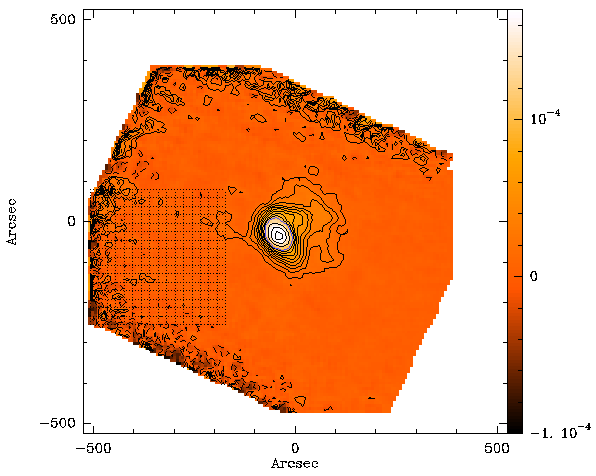The first images from a new generation camera called "ArTeMiS-1" have just been obtained at theGornergrat Observatory, near Zermatt in Switzerland. This camera operates in the still poorly known "sub-millimetre" domain, between the infrared and the millimetre waves. It is an array of 16x16 bolometers, small detectors which measure the light energy by converting it into heat. These detectors need to be cooled at very low temperature, only 300 millidegrees above the absolute zero. These successful observations are the first step toward regular astronomical observations to study star formation and galaxy evolution. The camera is based on the technology developed at the Service d'Astrophysique of CEA/DAPNIA, and LETI/LIR at CEA/Grenoble for the HERSCHEL satellite to be launched in 2007.
ARTEMIS : Ground-based telescopes for "sub-millimetre" observations
The project ArTeMiS (for Architectures de bolomètres pour des Télescopes à grand champ de vue dans le domaine sub-Millimétrique au Sol) aims at the development of astronomical cameras operating in the intermediate domain between the infrared and the millimetre waves which could be mounted on a 12m-class telescope in the site of ALMA (Atacama Large Millimeter Array), an array of large telescopes under construction in the North of Chili.
The prototype camera of ArTeMiS-1 (proto-ArTeMiS) was tested on the KOSMA-3m submillimetre wave telescope of University of Cologne in March 2006 at the Gornergrat site in Switzerland. Proto-ArTeMiS was designed to operate at 450 μm and was placed at one of the Nasmyth ports of KOSMA. The bolometer array is a 16x16 pixel PACS-like detector array that was modified to operate at 450 μm by adding a silicon layer on its surface. For this purpose, the cryostat has been operated and detector cooled down at 300 mK with conventional He refuelling with an autonomy of 24 hr.
First light:
Two nights of excellent weather condition (τ450 = 0.8-1.2 at zenith) have allowed the scientists at Service d'Astrophysique to obtain the first astronomical lights of proto-ArTeMiS by taking images of Saturn, Jupiter and Mars. Various observing modes were successfully tested: simple chopping between two positions, chopping and nodding, as well as scanning while chopping. This was achieved despite insufficient synchronisation between the telescope control system and the proto-ArTeMiS data acquisition system.
The first successful results on KOSMA with Proto-Artemis clearly demonstrate that grid bolometers based on the technology developed for the Herschel-PACS space project can be operated on ground-based telescopes at 450 μm. Artemis has thus successfully passed its first commissioning phase. An optimised version of proto-ArTeMiS will be installed, tested and used for astronomical observations at 450 μm on KOSMA by the end of 2006.
 |
"Proto-ArTeMiS-1" Team": Jean Le Pennec, Philippe André, Eric Doumayrou, Pascal Gallais, Benoît Horeau, Norma Hurtado, Michel Lortholary, Jérôme Martignac, Vincent Minier, Nicola Schneider-Bontemps, Louis Rodriguez, Michel Talvard (CEA Saclay) and Martin Miller (KOSMA Observatory)) |
Contacts : , Michel Talvard (chef de projet Artemis), Yannick Le Pennec (chef de projet P-Artemis), (responsable scientifique)
for related informations :
Rédaction: Vincent Minier et Jean-Marc Bonnet-Bidaud
• Structure and evolution of the Universe › Planets, star's formation and dynamics, interstellar medium Structure and evolution of celestial bodies
• Department of Astrophysics (DAp) // UMR AIM • pas de titre










